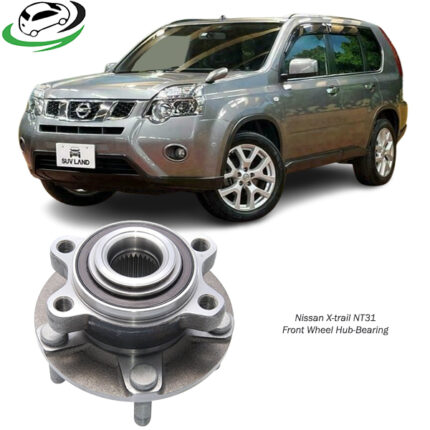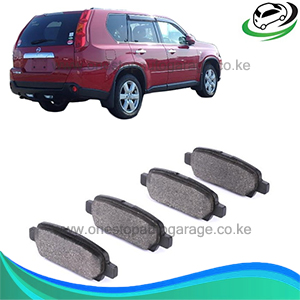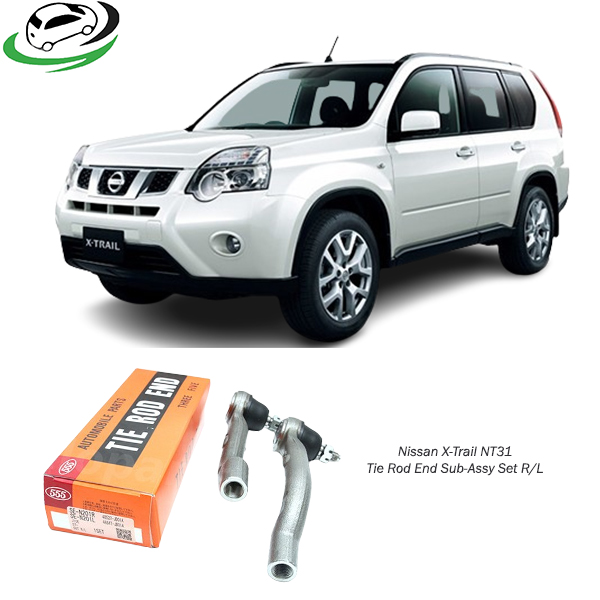-8%
Get Nissan X-trail NT31 Tie Rod End Sub-Assy Set R/L SEN201
The tie rod end sub-assembly is a critical component of a vehicle’s steering and suspension system, playing a vital role in ensuring safe and effective handling. This detailed overview will delve into the structure, function, benefits, and maintenance of the Tie Rod End Sub-Assembly Set (Right/Left) to help you understand its importance in vehicle performance and safety.
What is a Tie Rod End?
The tie rod end is a part of the steering linkage that connects the steering rack or box to the steering knuckle, allowing the driver to control the direction of the vehicle. It is a pivotal component in the steering system, translating the rotational motion of the steering wheel into lateral movement of the wheels.
Structure of Tie Rod End Sub-Assembly Set R/L
A typical Tie Rod End Sub-Assembly Set consists of the following components:
- Outer Tie Rod End:
- This connects to the steering knuckle and is responsible for transferring motion from the inner tie rod to the wheel. It often features a ball joint that allows for movement in multiple directions while maintaining a secure connection.
- Inner Tie Rod End:
- This component connects to the steering rack or gearbox and is usually threaded to allow for adjustment. The inner tie rod is crucial for maintaining the correct alignment of the front wheels.
- Adjusting Sleeve:
- This part connects the inner and outer tie rods, allowing for length adjustments to fine-tune wheel alignment. Proper adjustment is critical to ensure optimal handling and tire wear.
- Dust Boots:
- Dust boots are protective coverings that shield the ball joints from dirt, debris, and moisture, extending the lifespan of the tie rod ends.
- Hardware:
- A variety of nuts, bolts, and washers are included in the assembly for secure installation and maintenance.
Functions of Tie Rod End Sub-Assembly
The primary functions of the tie rod end sub-assembly include:
- Steering Control:
- The tie rod end allows the driver to steer the vehicle accurately. It converts the steering wheel’s rotational motion into lateral movement, helping the vehicle follow the intended path.
- Wheel Alignment:
- Properly functioning tie rod ends help maintain the correct alignment of the wheels. This alignment is essential for even tire wear and optimal handling. Misalignment can lead to increased tire wear and compromised vehicle control.
- Suspension Support:
- The tie rod end sub-assembly plays a role in the suspension system, ensuring that the wheels maintain contact with the road surface, especially during turns and uneven terrain.
- Vibration Dampening:
- The design of the tie rod end helps absorb shocks and vibrations from the road, contributing to a smoother driving experience.
Benefits of Using a Quality Tie Rod End Sub-Assembly Set
Investing in a high-quality tie rod end sub-assembly set offers several advantages:
- Enhanced Safety:
- A well-functioning tie rod end ensures precise steering control, which is critical for safe driving. Faulty tie rod ends can lead to steering failure, posing a significant safety risk.
- Improved Handling:
- Quality tie rod ends provide better responsiveness and handling characteristics, allowing drivers to maneuver their vehicles with confidence.
- Longevity:
- High-quality materials and construction ensure durability, reducing the need for frequent replacements. This results in cost savings over time.
- Reduced Tire Wear:
- Proper alignment and functioning of tie rod ends prevent uneven tire wear, extending the life of the tires and improving fuel efficiency.
- Ease of Installation:
- Many tie rod end sub-assembly sets are designed for easy installation, often requiring minimal tools and time.
Common Signs of Tie Rod End Wear
Recognizing the signs of tie rod end wear is crucial for maintaining vehicle safety and performance. Common symptoms include:
- Steering Play:
- Excessive play in the steering wheel can indicate worn tie rod ends, leading to reduced steering responsiveness.
- Uneven Tire Wear:
- If the tires show signs of uneven wear, it could be due to misalignment caused by worn tie rod ends.
- Vibrations or Shaking:
- Unusual vibrations or shaking in the steering wheel while driving may signal that the tie rod ends are failing.
- Clunking Noises:
- Hearing clunking or popping noises when turning the steering wheel can indicate loose or damaged tie rod ends.
- Difficulty Steering:
- If the steering feels heavy or unresponsive, it may be a sign of a failing tie rod end or other steering components.
Maintenance of Tie Rod End Sub-Assembly
Regular maintenance is essential to ensure the longevity and performance of the tie rod end sub-assembly. Here are some key maintenance tips:
- Regular Inspections:
- Periodically inspect the tie rod ends for signs of wear, damage, or looseness. Early detection can prevent more significant issues.
- Check Alignment:
- Have the vehicle’s wheel alignment checked regularly, especially after replacing suspension components or tires. Proper alignment reduces strain on the tie rod ends.
- Lubrication:
- Ensure that the ball joints and moving parts of the tie rod ends are adequately lubricated to prevent wear and tear.
- Dust Boot Condition:
- Inspect the dust boots for cracks or damage. Replacing damaged boots promptly can help protect the tie rod ends from dirt and moisture.
- Replace as Needed:
- If any signs of wear or damage are detected, replace the tie rod end sub-assembly promptly to maintain vehicle safety.
Conclusion
The Tie Rod End Sub-Assembly Set R/L is a crucial component in your vehicle’s steering and suspension system, directly impacting safety, handling, and overall performance. Understanding its structure, function, and maintenance can help you make informed decisions about your vehicle’s upkeep. By investing in high-quality tie rod ends and adhering to a regular maintenance routine, you can ensure a safer and more enjoyable driving experience. Always consult with a professional mechanic for inspections and replacements to guarantee optimal performance and safety.
Follow us on Facebook for more parts.




